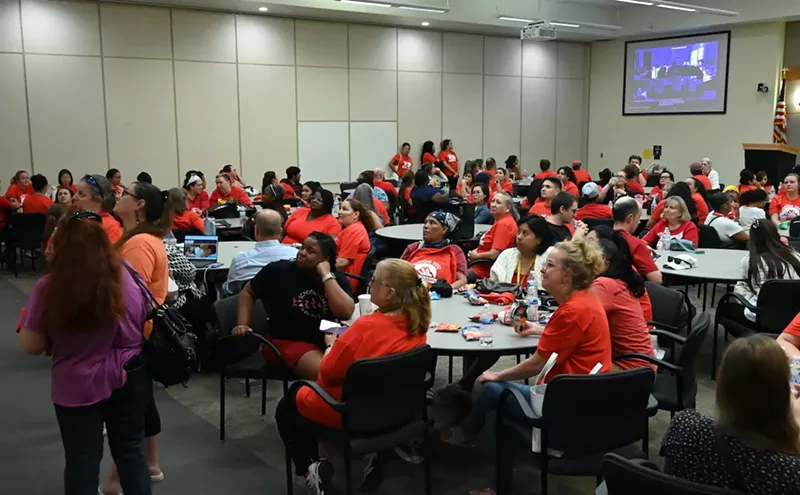Loose, blood-red vomit poured from Demetri’s mouth, his half-digested noodles swimming down the Chautauqua Trail. A few feet away, Lewis propped himself against a rock, his tremoring body kicking up dirt in the final rays of the sunset. Demetri’s stomach heaved, searching for something else to eject. But the only thing left in his body was heroin.
Hours before their failed sunset hike into Boulder’s picturesque Flatirons, Demetri and Lewis, students at the University of Colorado, snorted lines of heroin off their dorm-room desks through a tightly rolled $5 bill. Off the trail, through that same bill, Demetri vacuumed up another line, this time off his iPhone.
In 2012, Colorado ranked second-highest in the nation for self-reported prescription-drug misuse; since then, every metric of Colorado’s heroin use has spiked, according to a report released in April by the Heroin Response Work Group, an arm of the Colorado Consortium for Prescription Drug Abuse Prevention. Heroin seizures have increased 2,035 percent, arrests by 515 percent, and heroin-related deaths have nearly doubled over the past five years. Prescription opioids and their illicit counterparts have seeped into every corner of the country, their addictive grip killing more people than gun homicides in 2015, according to data from the Centers for Disease Control.The heroin epidemic grew out of people's medicine cabinets, starting with hundreds of millions of prescriptions for opioids.
tweet this
The heroin epidemic grew out of people’s medicine cabinets, starting with hundreds of millions of prescriptions for opioids like Percocet, OxyContin and Vicodin. The rate of opioid overdose deaths has paralleled the nearly four-fold increase of the number of prescriptions written since 1999, according to the CDC, while the number of people suffering from pain has reportedly stayed the same.
Demetri’s journey to heroin began in the suburbs of New York City in December 2013, with a little blue pill. On the way to a family dinner, Demetri’s older brother handed the then-sixteen-year-old a prescription pill — Demetri can’t remember what it was, specifically — saying, “It’s basically medicated heroin.”
Demetri was unsure of how the pill would make him feel when he took it. But eventually, his family’s boring small talk faded into the background, and a euphoric high took over his body.
The effects weren’t all positive. When a wave of nausea suddenly set in, he sprinted from the table. Clenching his lips together, he desperately pulled at the locked bathroom door. Unable to hold it in any longer, Demetri left his half-digested meal in a sink in plain view of the restaurant. As he made his way back to the table, his high grew stronger. “Even when you throw up on the stuff, you’re still happy,” he says.
He was hooked. He would pop pills before dinner and long shifts at work. He and his brother even took some before their grandmother’s funeral, where their joking got them kicked out.
When his brother’s supply of pills eventually ran out, Alice, a friend hooked on heroin, took Demetri into the city to wander the streets asking strangers for dope. They found heroin quickly. Illuminated by the fluorescent bathroom light of a Bronx diner, Demetri snorted his first two lines off his phone with her.“Even when you throw up on the stuff, you're still happy.”
tweet this
Demetri preferred pills when he could get them; during the next two summers, a lifeguarding job supplied him with plenty of cash for the more expensive meds. When fall came and the cash flow stopped, he would transition to heroin, a cheaper alternative.
Users make the jump from medication to heroin primarily for financial reasons, according to Robert Valuck, a CU Anschutz professor of pharmacy and director of the Colorado Consortium for Prescription Drug Abuse Prevention. Whereas an opioid dependency can cost hundreds of dollars a day, heroin is closer to $25.
During senior year, when they were desperate for cash, Demetri and his friends would steal money from their classmates’ lockers and from unlocked cars at train stations. By the summer of 2016, before Demetri left for college at CU, his use had ballooned to three or four bags a day. His tolerance had grown to the point that he would start to experience withdrawal in the afternoon if he finished all his dope too early in the morning. But nothing could get in the way of his high. “I just like the person I am when I’m on drugs,” Demetri says. “I’m a lot more caring; I’m a lot more outgoing.”
Demetri arrived in Colorado without drugs or a local dealer. His body began to panic those first days off heroin: He was on vacation with his family in Rocky Mountain National Park the week before school started, and withdrawals left him paralyzed with fatigue and depression in their hotel room. He told his family he had the flu.
“You feel like you’re going to die,” he says about withdrawals. “At this point, I feel like I am not even what I was sober before I started the drugs…. I am normal when I am really high.”
Although they grew up only miles apart, Demetri and Lewis didn’t meet until they moved halfway across the country to attend college, where they shared a small dorm room.
Lewis grew up in Queens and took the subway every day to the Bronx for school. His parents had hoped he would stay on the straight and narrow in his science-focused school, but Lewis ended up cutting class to get high on Xanax, molly and other drugs in the bathroom.
Within those stark walls, he found a way to escape his strict Christian parents and their constant disapproval. “I like [drugs] to either completely knock me out to the point where I am unable to do anything, or hype me up so much that I can do everything,” Lewis says.
After they moved into their dorm, Demetri and Lewis quickly bonded over their shared interest in drugs, and during the first weeks of school, Demetri introduced Lewis to a few new ones. After finding some pills one night out on the Hill in Boulder, Lewis and Demetri bought a package of heroin and pills cut with fentanyl from the dark web.
Synthetic opioids like fentanyl have become the latest chapter in the heroin epidemic. Developed for relief of intense pain, synthetics can be a hundred times stronger than morphine. Dealers now stretch the strength and profits of their product with them. They’re also very dangerous. In Summit County, two users died after overdosing on pills cut with carfentanil, a fentanyl derivative and elephant tranquilizer that is a thousand times stronger than morphine. The equivalent of one grain of salt of carfentanil has the potential to kill if ingested.
Demetri and Lewis’s drugs arrived one morning in September 2016. As Demetri slept off a hangover, Lewis tore open the box and poured out a line of heroin.
After snorting his first line, a rare smile cracked Lewis’s stony face. The corners of his beard turned up as he mumbled to himself about finding his “new favorite [drug].” He stumbled around piles of dirty clothes and scattered trash to the beanbag chair next to Demetri’s bed. There he sat, his head dangling loosely from his shoulders as he drifted in and out of consciousness.
Lewis’s vibrating pocket snapped him awake. Over the phone, his father asked if he had met with his counselor, concerned that Lewis’s schedule of online courses would leave him with too much free time. Lewis’s secret interest in drugs, drinking and sex, sometimes with other men, has isolated him from his religious family, especially his parents.
He reassured his father that everything was okay, hung up and returned to the welcoming embrace of his first heroin high.
The afternoon sun and distant chants from a football game slipped into their room as Demetri stirred, sober and hungry. He fixed the latter problem with a can of SpaghettiOs and the former with a line of heroin that he chopped with his old high school ID.
Nighttime hikes had become the pair’s favorite way to celebrate everything from birthdays to drug scores. It being Lewis’s first time on heroin, he slid on his sneakers and suggested they leave their musky dorm room for the Flatirons. Demetri agreed.
Passing hordes of CU fans cheering “S’go, Buffs!,” Demetri and Lewis walked arm in arm to the trailhead at Chautauqua Park. By the time they arrived at the trail, Lewis’s stick-thin body was fighting waves of uncontrollable shaking, and Demetri’s shoes were speckled with fresh vomit. They began their ascent as the final rays of sun and the last hikers of the day were leaving the park.
“I don’t even remember what used to make me happy,” Demetri said before ducking off behind a bush to do another line.
The cool September night air added to Lewis’s shakes and forced them to turn around. Waiting for an Uber they’d summoned, they shared long drags off a cigarette, talking about what party to go to later that night.
CU, a school known for its drug-using student body, has seen “no significant change in the use of opioids,” according to university spokesman Ryan Huff. Just over 7 percent of respondents from CU said they’d misused a prescription drug within the previous year, according to data from 2015 and 2017 from the National College Health Association Survey.
Steven Bentley, a drug-and-alcohol counselor at CU’s Wardenburg Health Services center, says that while he has not seen an increase in heroin use on campus, either, he’s concerned by the number of students he sees in his office for heroin and prescription-drug abuse.
“By the time someone is in my office, probably several others — maybe two, three times the number — are also experiencing [drug abuse],” Bentley says.
Three days after his first taste of heroin, Lewis got his first taste of withdrawal. He lay on top of his bed, shrinking into his sweatshirt. Across from him, Demetri scraped together one of the last lines of their order. They had blown through almost all of their drugs on the trail and in the days after, and their next package wouldn’t arrive until the following week.
The extreme ups and downs of opioid abuse weighed heavy on Lewis, helping to fuel a resurgence in his depression and self-harm. He sliced rows of lines into his arms with a razor blade and heated the tip of a screwdriver to burn holes into his skin. He found relief in the pain, but the constantly upbeat Demetri was horrified by his friend’s self-destruction.
One night in October, while Lewis was blacked out during a Xanax binge, Demetri grabbed his razors and screwdriver and threw them in the trash. After realizing his tools of harm were gone, Lewis stormed off into the night.
Returning briefly early the next morning to grab some clothes and his laptop, Lewis left his dorm to join a group of people sleeping under U.S. 36. For three nights, he lived on the street, asking drivers stopped at red lights for cigarettes and spare change.
Lewis’s stay on the streets was one of the only parts of his addiction that fit into what CU’s Valuck says is an outdated image of an addict. Heroin’s cheapness still makes it popular on the streets, but the prescriptions for opioids in wealthy suburban medicine cabinets have drawn users from all walks of life. “It has spread to all demographics — very rural to very urban, very old to very young,” says Valuck.
After his stint on the street, Lewis visited his girlfriend in Fort Collins. He eventually returned to Boulder and to his dorm room to reconcile with Demetri. “I realize now he was looking out for me and I was being childish,” Lewis says. But he wasn’t out of the woods yet.
It wasn’t until Lewis woke up in a hospital bed a few weeks later after a suicide attempt that he decided to end his drug use for good. He had found rock bottom and was ready to climb his way out, something Demetri has yet to do.
“I always thought the only way I am ever going to get clean totally is if I hit rock bottom,” Demetri says.
After exams ended in mid-December 2016, Lewis stood in a clean corduroy jacket and a pair of jeans next to Demetri. His girlfriend dangled her feet off the edge of Lewis’s bed; next to her were two packed suitcases instead of mounds of the usual dirty clothes. Lewis gave Demetri a hug. They said their goodbyes, and Lewis headed to his girlfriend’s home in Fort Collins to move in with her. With her help, Lewis has been able to stay clean.
It didn’t take long for Demetri to find others with whom to indulge his habit. After returning to Boulder from winter break in January this year and seeing his old friends, his semester started with new classes, a new roommate and a new dealer.
Joseph, a fellow Buff, loves heroin in the same way Demetri does. Joseph spent his New Year’s Eve in a Denver hotel room partying on black tar heroin from a dealer he found in Civic Center Park. He eventually connected Demetri with his new hookup.
The day after Demetri returned to school, he took the bus to Denver to meet up with the guy. He transitioned from snorting heroin to smoking it every day for the next few months, only taking short breaks when “R.I.P.” posts about a friend who’d overdosed took over his news feed or he couldn’t make the bus trip to Denver to get more.
Toward the end of the school year, Demetri sat in his dorm room, adding a piece of burnt foil to the pile on his desk. He had grown his collection after months of daily heroin smoking.
Three years of heroin and opioid use had changed him. His first semester at CU Boulder, Demetri was attending class and functioning, for the most part, like a regular student. But by the end of his freshman year, he was living between withdrawals and highs. He regularly cut class, and by May he owed his credit-card company $1,000. By finals week, he was sneaking in behind other students when they opened the door to the dorm because his hands were too shaky or he was too high to find his access card in his wallet. Finding the next high became the day’s priority, and the ups and downs set the rhythm for his weeks. By the end of his first year at CU, Demetri had been placed on academic probation for his failing grades and was saying that he hoped to stop doing heroin after the summer. But he sounded unsure.The day after Demetri returned to school, he took the bus to Denver to meet his new dealer in the park.
tweet this
Steps have been made in Denver to address heroin’s spread. First responders, and even some librarians, now carry Narcan, a lifesaving drug that can reverse an overdose. Working groups have been formed to link law enforcement, treatment experts and doctors together. But the future is still grim for Colorado and the U.S., according to CU’s Valuck.
“This has been going on so long we will need to retrain the better part of a million practitioners,” says the professor, adding, “The worst is yet to come.”
In a freshman writing class, Demetri had an assignment to write a story, 3,000 words of fiction. Instead, he wrote about himself, changing his own name and the names of his friends. He ended the piece with this thought from his main character: “Maybe I’ll stop, maybe I won’t, but today at this exact moment, I know I just want more.”


















